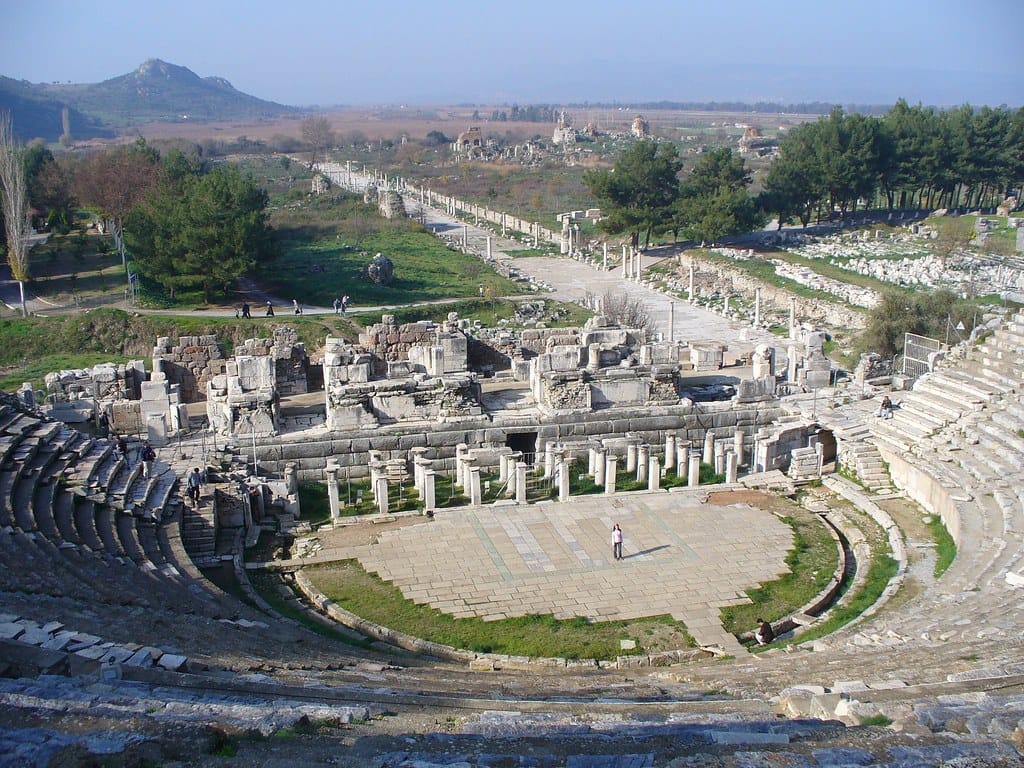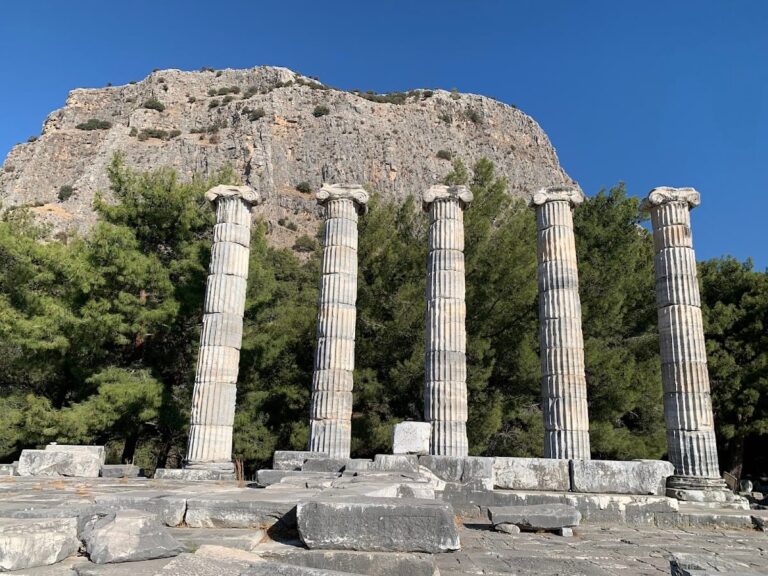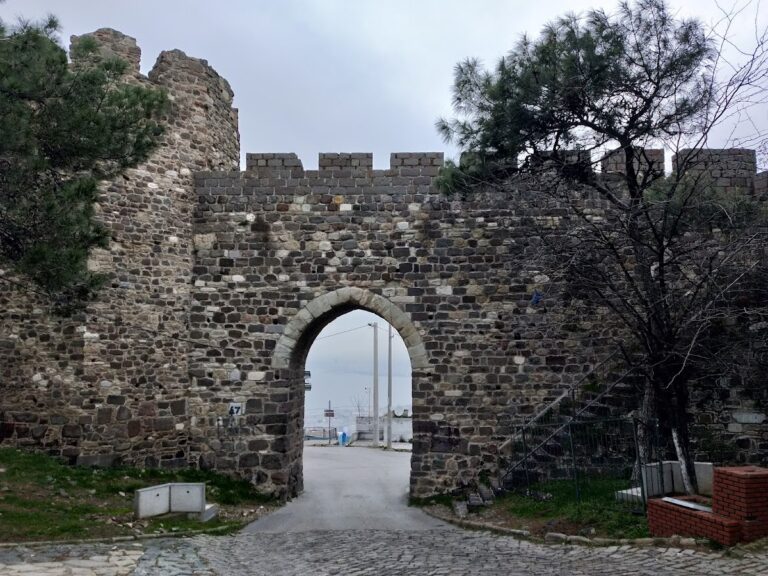Ephesus Ancient City
Table of Contents
Exploring the Ancient City of Ephesus in Turkey
History
Ephesus, an ancient Greek city on the Ionian coast of modern-day Turkey, was founded in the 10th century BCE by Attic and Ionian Greek settlers. They established the city on the site of Apasa, formerly the capital of the Arzawa Kingdom. Ephesus became an important member of the Ionian League, a confederation of twelve Ionian cities, and flourished during the Classical period.
Roman Rule and Urban Flourishing
In 129 BCE, Ephesus was incorporated into the Roman province of Asia following the bequest of the Attalid kingdom to Rome. This marked the beginning of its golden age. Under Roman rule, Ephesus developed into one of the most important cities of the eastern Mediterranean. It became the capital of Roman Asia Minor and a centre for commerce, governance, and culture.
The city boasted grand architecture and civic planning. Notable Roman-era structures include:
The Library of Celsus, a monumental tomb and public library completed around 117 CE.
The Great Theatre, expanded under Roman rule, capable of seating 25,000 spectators.
An extensive aqueduct system, public baths, a gymnasium, and terrace houses with intricate mosaics.
The Temple of Artemis, originally built around 550 BCE and later rebuilt after destruction, remained a major pilgrimage site even during Roman times. Although a Greek legacy, it continued to draw visitors under Roman rule, enhancing the city’s religious and economic status.
Ephesus and Early Christianity
Ephesus also played a key role in early Christian history. The Apostle Paul lived and preached in the city, addressing tensions between the new faith and traditional Artemis worship. The Epistle to the Ephesians is traditionally attributed to Paul. Christian tradition also holds that the Gospel of John may have been written in Ephesus, and that Mary, the mother of Jesus, lived her final years nearby.
Decline and Disasters
Despite its prominence, Ephesus suffered from natural disasters and external threats. In 263 CE, the city was sacked by the Goths, causing severe damage. Although partially rebuilt, especially during the reign of Emperor Constantine the Great, its position weakened due to the gradual silting of its harbor, which reduced its maritime importance.
Byzantine Period and Later Decline
Under Byzantine rule, Ephesus remained a provincial center but steadily lost influence. A devastating earthquake in the 6th century and Arab raids in the 7th century further accelerated its decline. Nevertheless, it remained an ecclesiastical center, hosting important religious synods such as the Third Ecumenical Council in 431 CE.
By the 11th century, Ephesus was captured by the Seljuk Turks and eventually absorbed into the Ottoman Empire. With the harbor completely silted up and trade routes shifted, the once-great metropolis was largely abandoned by the 15th century.
Remains
The archaeological site of Ephesus is one of the largest and best-preserved ancient urban centers in the eastern Mediterranean. Spanning roughly 415 hectares, it presents a detailed snapshot of urban life in antiquity, particularly during the Roman Imperial period.
Public Buildings
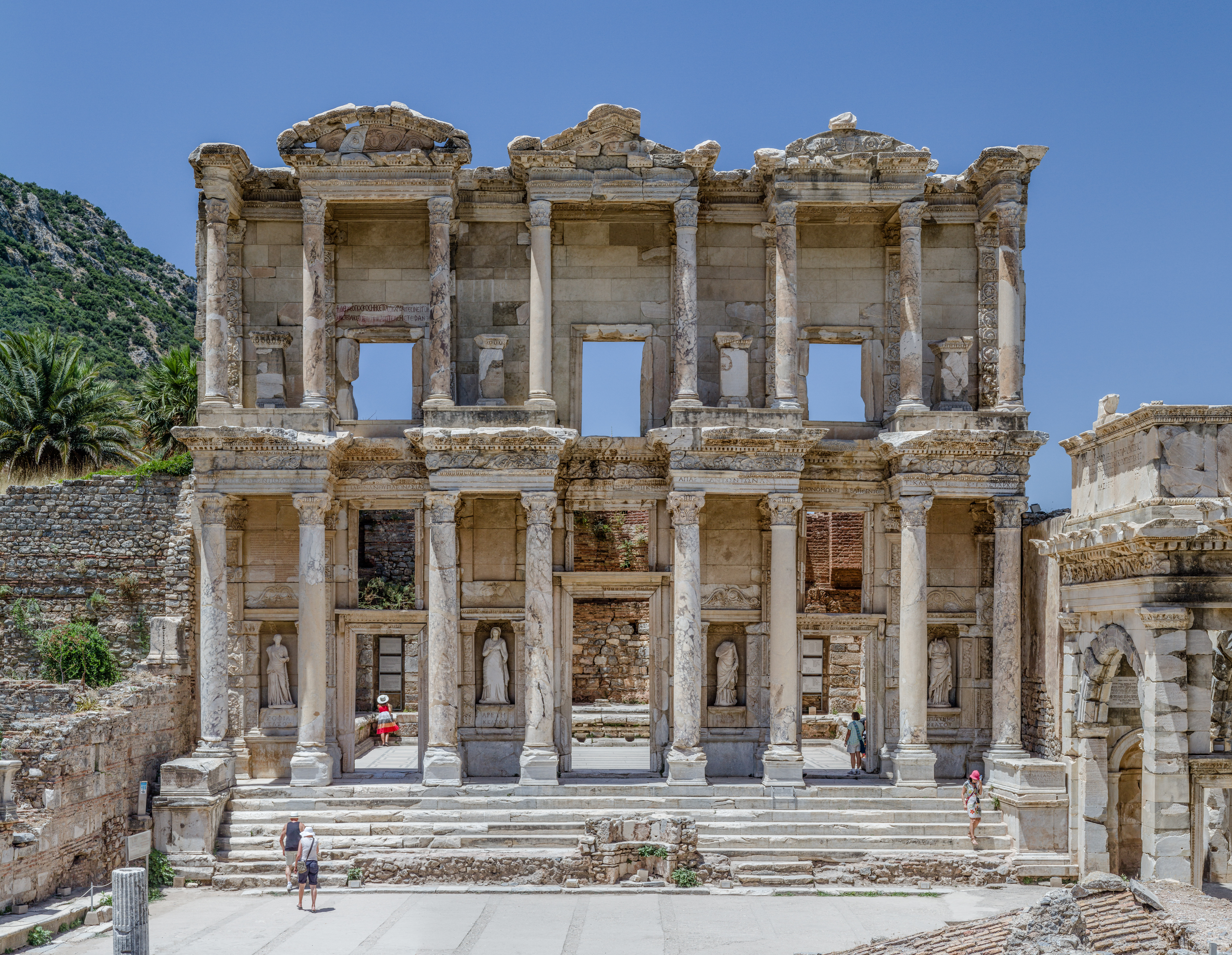 Among the site’s most impressive structures is the Great Theatre (See above), which could seat approximately 25,000 spectators. Originally constructed during the Hellenistic period and later expanded under Roman rule, it was used for theatrical performances, public meetings, and even gladiatorial contests.
Among the site’s most impressive structures is the Great Theatre (See above), which could seat approximately 25,000 spectators. Originally constructed during the Hellenistic period and later expanded under Roman rule, it was used for theatrical performances, public meetings, and even gladiatorial contests.
Another highlight is the Library of Celsus, built around 125 CE as a tomb for the Roman consul Tiberius Julius Celsus Polemaeanus. It once held nearly 12,000 scrolls and symbolized Ephesus’s status as a cultural centre. The reconstructed façade of the library is one of the most iconic images of ancient architecture in the Mediterranean.
The Temple of Artemis
Though today only a single column remains, the Temple of Artemis once stood as one of the Seven Wonders of the Ancient World. Measuring 127 by 69 meters and supported by more than 100 marble columns, it was a large sanctuary dedicated to the goddess Artemis. The temple’s sheer size and decorative richness reflect both the religious devotion and economic strength of Ephesus in antiquity.
Other Structures
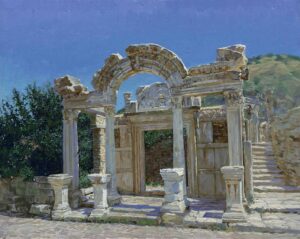 Ephesus also features a number of other notable monuments:
Ephesus also features a number of other notable monuments:
The Odeon, a small covered theatre that seated around 1,500 people, likely served for council meetings and musical performances.
The Temple of Hadrian, dating to the 2nd century CE, contains beautifully preserved reliefs and sculptural fragments, offering a glimpse into the city’s artistic traditions.
The Terrace Houses, also known as the “Houses of the Rich,” are an exceptional example of elite Roman domestic architecture. Their mosaics, frescoes, and underfloor heating systems reveal the luxurious lifestyle of Ephesus’s wealthy citizens.
Infrastructure and Urban Planning
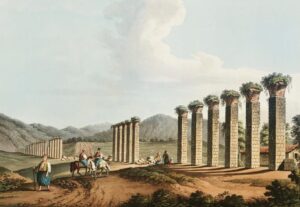 Ephesus had a remarkably advanced aqueduct system, with at least six aqueducts supplying clean water across the city. This infrastructure supported the city’s numerous public baths, fountains, latrines, and domestic plumbing systems. The remains of agoras (marketplaces), streets, and civic buildings further demonstrate the city’s sophisticated urban layout.
Ephesus had a remarkably advanced aqueduct system, with at least six aqueducts supplying clean water across the city. This infrastructure supported the city’s numerous public baths, fountains, latrines, and domestic plumbing systems. The remains of agoras (marketplaces), streets, and civic buildings further demonstrate the city’s sophisticated urban layout.
The Basilica of St. John, built in the 6th century CE on the presumed burial site of the apostle, represents the city’s continued religious significance in the Byzantine era. Its cross-shaped layout and large domes reflect early Christian architectural styles.
Modern Excavations and Legacy
Systematic archaeological excavations at Ephesus began in the 19th century, primarily led by Austrian teams, and continue to this day.
Now a UNESCO World Heritage Site, Ephesus attracts millions of visitors annually and remains a central site for archaeological and historical research. Its ruins illustrate the cultural continuity from the Greek through the Roman and into the Byzantine periods, making it one of the most important archaeological sites in the world.
